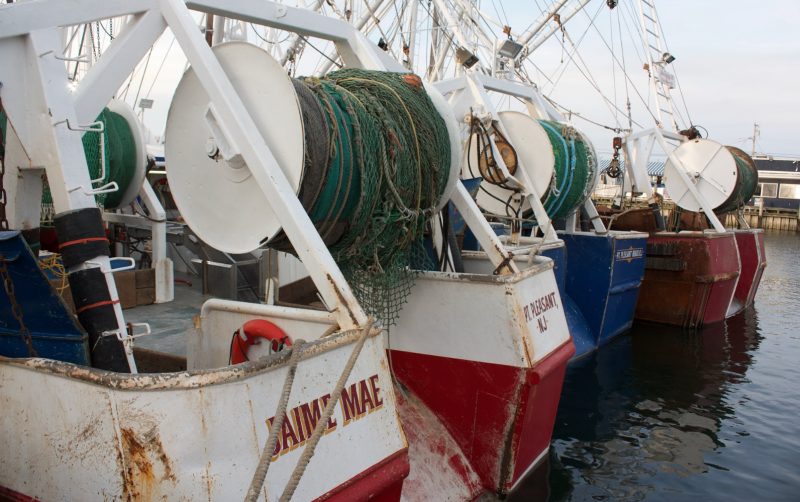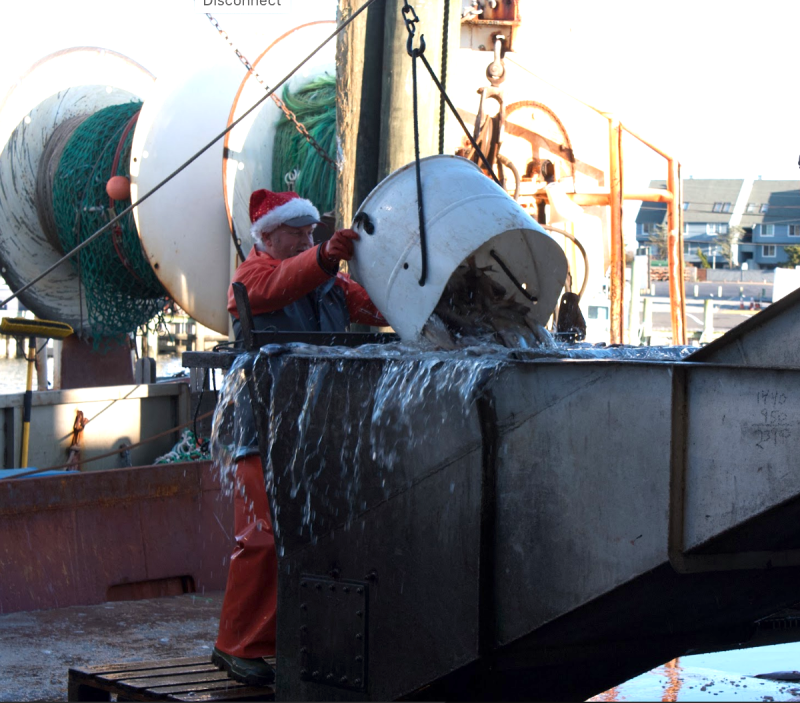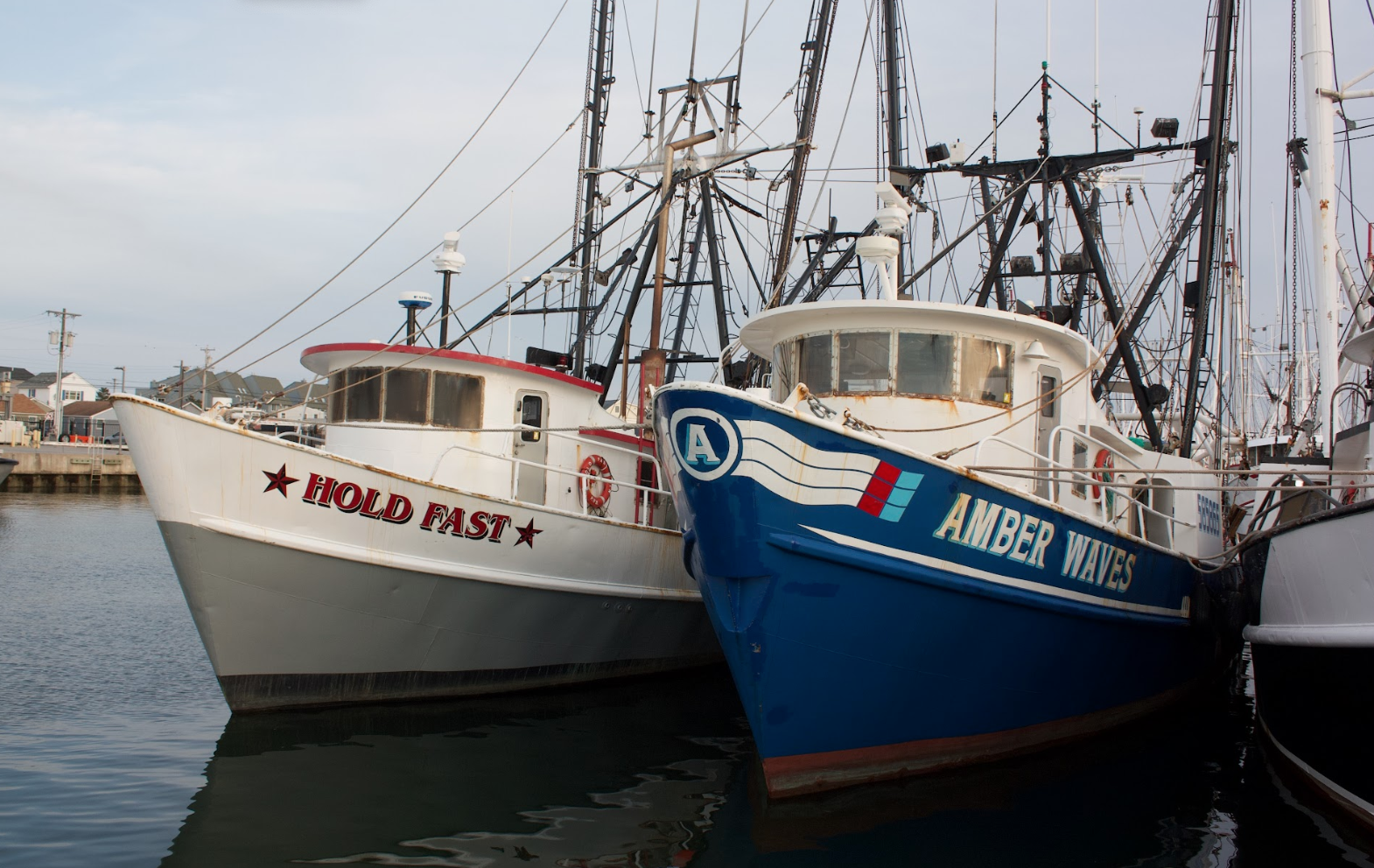Established on July 1, 1953, the Fishermen’s Dock Cooperative, Inc. of Point Pleasant Beach, N.J., has been the home port of generations of New Jersey commercial fishermen. The cooperative dock and packing house – or “the Co-op” as it is customarily referred to, is located near the entrance to the Manasquan Inlet.
The Manasquan Inlet sits between the Jersey Shore towns of Manasquan and Point Pleasant Beach. The inlet is part of the Atlantic Intracoastal Waterway and a major thoroughfare of maritime transportation. Point Pleasant Beach together with the nearby town of Brielle, are home to a fleet of commercial and recreational fishing vessels.
Retired commercial fisherman and author Jim Lovgren explained that the Co-op was originally established by twelve members, all of whom were commercial fishermen. The goal in forming the Co-op was to provide members with dock space, easy access to fuel and the packing out of fish for sale to various markets.
When the Co-op started, “the main species that the Co-op dealt with, was whiting for thirty years,” said Lovgren, a 2006 National Fisherman Highliner. Since whiting have all but vanished over the last 25 years, black sea bass, summer flounder, scallops and porgies are some of the most targeted species by Co-op vessels. All of the current Co-op members now are involved with operating draggers.

During the 1960s, Co-op membership peaked at sixty fishermen, but currently consists of thirteen members. This reduction in membership is due in part to an increase in vessel size and limited dock space. The Co-op is one of only two New Jersey fishing cooperatives; the Belford Seafood Cooperative about 40 miles north lies on Sandy Hook Bay, the southern end of the New York-New Jersey Harbor complex.
Each member of the Fishermen’s Dock Cooperative is a share owner – and every member has a say in how the Co-op operates. Regardless of the number of shares that an individual member may own, every member has only one vote. Co-op membership is available to commercial fishing vessel owners as well as non-vessel owners such as commercial fishing captains and mates.
The Co-op profits come from the packing out of fish and the sale of fuel. Commercial fishermen who are non-members may be permitted to use Co-op facilities but must seek prior approval from Co-op management. The Co-op produces on average $15 million in business annually.
Brick Wenzel is a commercial fisherman who holds the position of fisheries liaison at the Co-op. It’s a job that keeps Wenzel involved in political, governmental affairs and news media related matters pertaining to the Co-op, as well as to commercial fishing in general. He works closely with other organizations including the New Jersey Farm Bureau on legislation that benefits commercial fishermen. Wenzel is also executive director for the nonprofit America's Gleaned Seafood, which provides low-cost, high quality seafood to community food banks.

Different fish species bring their own prices and the Mid-Atlantic fisheries have changed over the years, Wenzel explained. Commercial fishermen sailing out of the Co-op have adapted to fishery management changes for the most part, and “our fleet of vessels have a large enough variety of permits that if one fishery is affected, we can always switch over to another,” he said.
When fish come onboard a dragger, they are sorted, separated and packed between layers of ice and held in the hold of the boat until it reaches port. The boats operating out of the Co-op can be be working at sea for up to three days, so having the fish properly iced is critical to preserving the harvested catch.
As the catch is unloaded from the boat, a bucket hooked to a hoist and boom are used to bring the fish on land and into a saltwater washdown tank. The saltwater used in the tank is pumped in from the water near the Co-op and is used to clean the fish of any ice as well as any predatory species like starfish and other debris both natural and manmade.
After the washdown process, the fish make their way up a slotted metallic belt that drains water off the fish and separates them so as to prevent any pile-ups. At this point, the fish slide down a metal chute and onto another conveyor belt where they are sized and placed in baskets by Co-op employees.
The baskets are then brought over to a large scale where they are weighed. From this point, appropriately sized boxes are selected for the packing out process.
The size of the fish brought into the Co-op will determine the size of the boxes utilized. The Co-op is able to pack fish in boxes ranging in weights from sixty pounds to two thousand pounds.
When packaging fish such as porgies, ice is added to the bottom of a heavy duty sixty-pound sized cardboard box and the fish are then added. To keep all of the seafood cold, another layer of ice is then added on top of the fish prior to sealing the box.

The time of year determines how much ice is added. During summer months, more ice is added to boxes to account for the melting time which is typically slower in winter months. After each box is sealed, they are then placed on pallets and additional boxes stacked up until the pallet is completely packed. These pallets are then readied for pickup and delivery to their destination.
Due to the perishable nature of seafood the Co-op supplies to fresh markets, the whole operation of unloading fish from the hold of a commercial vessel to the packaging process has a clear and effective efficiency to it.
Seagulls help to clean up discarded fish as they patrol the dock next to the Co-op warehouse waiting for the moment to be rewarded with a piece of discarded fish. The birds have become so used to humans that when approached, they seem hardly intimidated and certainly appear to be well-fed, judging from their large size.
Despite the continued demand for seafood in their region and nationwide, Co-op members like American commercial fishermen have many concerns. A lot of those center on the United States federal government.
“The government has been doing such a good job destroying the fishing industry that there’s nobody left to defend it,” said Lovgren. He warns that between government regulations on commercial fishing, imported seafood and the emerging U.S. offshore wind energy industry, the American fishing industry is in decline.
“There’s hardly enough fishermen left to pay the advocates that we need,” Lovgren added.
Fisherman’s Dock Cooperative, Inc. is an integral part of the seafood industry in New Jersey and across the country. The Co-op has kept New Jerseyans employed for generations and provided critical access to the Mid-Atlantic Ocean’s fishing grounds.
The Co-op is currently economically stable, but political oversight and the continued push for offshore wind generation systems continues to threaten the commercial fishing industry in New Jersey and nationally.







